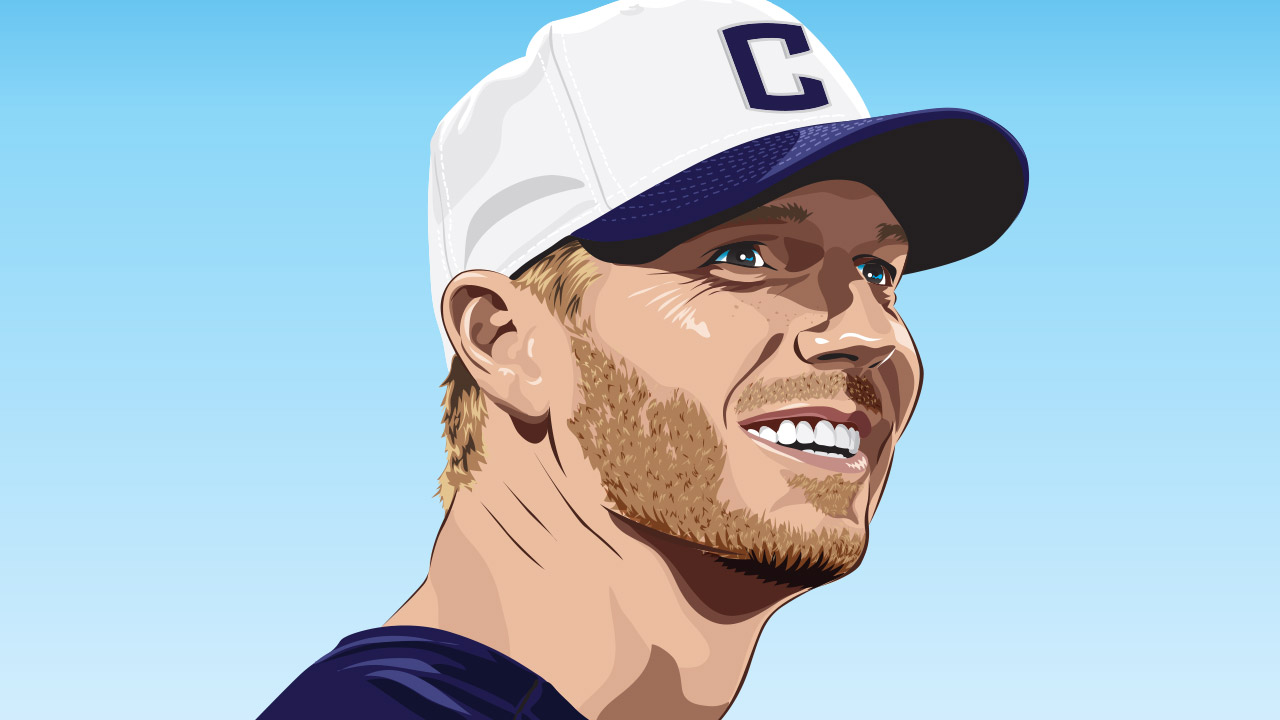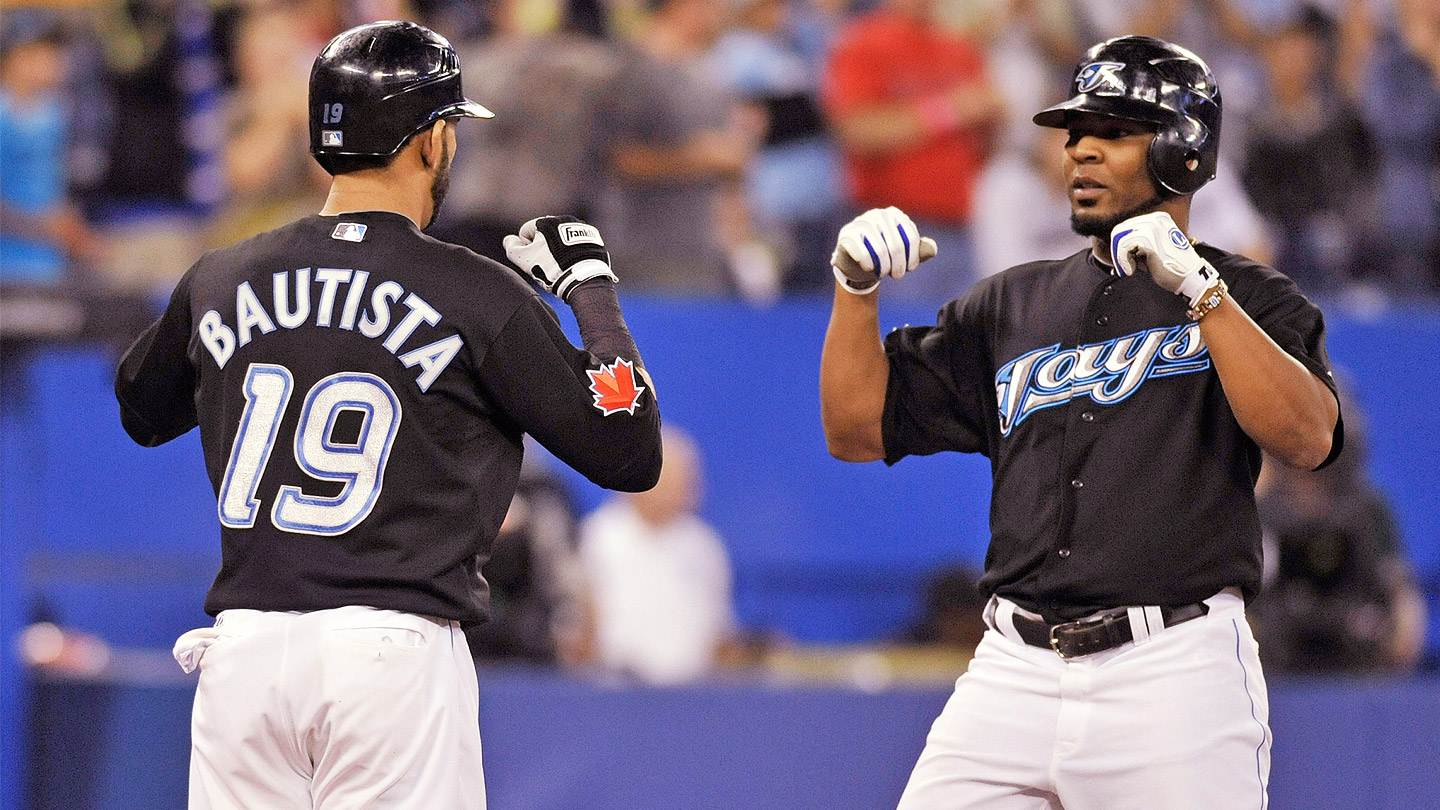No. 8: Jose Ramirez, 3B, Lindors (Last Year: Not Ranked)
Nine days before the start of the 2017 season, Cleveland signed Ramirez to a five-year, $26 million contract, one that can swell to seven years and $50 million with two club options. Ramirez was an excellent young player at the time he signed that deal, coming off a season in which he hit .312/.363/.462, showed off playable defence at multiple positions, and did more to help his team on the basepaths than any player other than Mike Trout and Mookie Betts. Then he nearly tripled his home-run total in his age-24 season, and suddenly Cleveland has committed grand larceny.
No. 7: Corey Kluber, P, Lindors (Last Year: 17)
In 2002, a bunch of smart people started tracking the value of every pitch thrown by every pitcher in Major League Baseball. The goal was to acquire more accurate and more granular data, so we could compare the best of the best – the best fastballs, the best sliders, the best change-ups, the best pitches, period. No pitcher in that span has ever thrown a deadlier curveball than Kluber did in 2017.
And Kluber throws a wicked cutter and a plus change-up to boot. Not bad for a guy Cleveland landed eight years ago for the tail end of Jake Westbrook’s career.
No. 6: Aaron Judge, OF, Yankees (Last Year: Not Ranked)
He’s coming off a season in which he set the all-time rookie record with 52 home runs and nearly pocketed both the AL’s Rookie of the Year and MVP trophies. He’s 25 years old and can’t test the open market for five more years. At 6-foot-7, 282 pounds, he’s the biggest position player in major-league history, Paul Bunyan in real life.
In an era when even the backup batboy seems capable of 30 homers, Judge’s astronomical power gives him something incredibly rare in this sport: star power luminescent enough to break through the baseball world into the larger public consciousness.
So why the hell isn’t he number one? Here’s what one baseball exec had to say:
“I love Judge, he has that it factor (makeup, fans, team guy, etc.), he’s making no money now or for the future, and he’s got insane power. That said, he plays on a corner and he has a lot of holes. Would I trade Judge straight up for [Carlos] Correa or [Mike] Trout or [Corey] Seager or [Francisco] Lindor? Yes, absolutely, I would – and my suspicion is the Yankees would, too, so long as it weren’t a total PR nightmare. A big part of this is building up the middle. Players who can play catcher, shortstop, second base and centre field are infinitely more valuable than corners.”
The Yankees themselves know all about this, having built baseball’s most recent dynasty around up-the-middle stars Derek Jeter, Bernie Williams, and Jorge Posada. And several other baseball insiders I polled shared that view of up-the-middle dominance above all else. So Judge will just have to settle for being the guy the Yankees wouldn’t trade for anything.
(looks around furtively)
(picks up phone)
(asks if any of these next five guys could be had)
(just hypothetically, of course)
No. 5: Kris Bryant, 3B, Cubs (Last Year: 2)
Given the carnage he inflicted on the league in his 2016 MVP season, Bryant’s 2017 campaign might’ve felt like a bit of a letdown.
Except he showed significant improvement in his walk rate (10.7 per cent to 14.3 per cent). And his strikeout rate (22 per cent to 19.2 per cent). And on-base percentage (.385 to .409). And swinging-strike rate (13 per cent to 10 per cent).
By park-adjusted, context-independent offence, Bryant was essentially the same hitter two years in a row, faring 48 per cent better than league average in 2016 and 46 per cent better in 2017 (by wRC+). He just had a randomly, flukishly bad season with runners in scoring position, hitting only .237 in those spots and watching his RBI total nosedive as a result.
He’s already a full-blown superstar, and hasn’t even played 500 games in the majors yet. We should all be so lucky to have a year like Bryant’s 2017 be considered anything close to a disappointment.
No. 4: Corey Seager, SS, Dodgers (Last Year: 1)
At this altitude, even something as minor as a little, nagging elbow injury can knock you out of the top spot. Even with a minor dropoff in his overall numbers, Seager still showed more patience at the plate, plus a defensive jump that propelled him into the top five at his position (per Baseball Info Solutions’ Defensive Runs Saved).
Then there’s that age thing again: Seager’s entering his fourth big-league season, yet he’s a full two years younger than last year’s AL Rookie of the Year. If Seager can avoid another extended stretch of playing through pain, another level of performance might be coming soon.
No. 3: Francisco Lindor, SS, Lindors (Last Year: 4)
This is the face of a player who came up as an all-world defensive prospect, then blossomed into a two-way threat who’ll beat you with a barrage of crush jobs into the bleachers.
This is the face of a player so good, so young, and so magnetic, the franchise that employs him would do well to ditch their nickname entirely, take a page out of its history book, and name itself after its star player.
This is the face of a player who oozes joy with every step he takes on the diamond.
This is the face of a player about to inflict maximum damage on a baseball.
This is the face of a player about to delight a new generation of fans who’ll grow up thinking that baseball is, above anything else, incredibly fun.
No. 2: Mike Trout, OF, Angels (Last Year: 3)
How do you end up near the top of a list of best bangs for the baseball buck when your salary suddenly balloons to $33.25 million a year for the next three years?
Simple, really. One quick-and-dirty way to calculate a player’s value is to consider his contributions via Wins Above Replacement. That stat has earned gobs of criticism every year, with objections ranging from hard-to-grasp calculations of defensive value to what constitutes a replacement level player in baseball. But let’s say that Wins Above Replacement at least gives us some framework. By that metric, it now costs close to $9 million to acquire one win on the open market. Assume that Trout’s thumb injury was a fluke last year, and that we can hitch his value to his full-season rate of production over the past three seasons, which lands a bit better than nine Wins Above Replacement a year.
Now let’s do some quick math.
You can argue that in this era of suddenly thrifty spending for players, straight calculations like these might be a bit off. But if we use our standard formula for value as compared to replacement value, Trout should theoretically be making something like eighty million dollars a year.
Close your eyes, imagine Trout suddenly landing on your favorite team, and tell me you wouldn’t go after your team’s owners with torches and pitchforks if they were to ever pass on a hypothetical opportunity to land modern baseball’s version of Willie Mays.
No. 1: Carlos Correa, SS, Astros (Last Year: 5)
A thumb injury blunted a huge growth season for Correa, one that saw him hit a terrific .315/.391/.550, nudging him closer to the inevitable Alex Rodriguez comparisons that keep coming up. With a little sleuthing, you can find even more causes for optimism. Those include upticks in flyball rate and hard-hit percentage (Correa ranked second among all shortstops in average exit velocity) and a passel of batting eye-related gains, including swinging-strike rate, chase rate, and contact rates.
The real test here would be finding something not to like. Correa’s a 6-foot-4, 215-pound behemoth who’ll get stronger with age, yet he’s also an agile defender who rated solidly above average at shortstop last season by advanced metrics. He’s even playoff tested, with a highlight reel full of big October moments and a ring already to his credit.
And he’s just 23-years old, offering all of us a chance to dream the biggest dreams on his ultimate potential.
Remember when doubters wondered how and why the Astros paid so much less than slot value (a $4.8 million signing bonus, vs. the league-recommended slot value of $7.2 million) to get Correa at the top of the draft six years ago? Wherever those skeptics were, they disappeared long before one of the leading faces of baseball draped himself in a Puerto Rican flag and celebrated like a Little Leaguer on the Dodger Stadium grass last fall.





